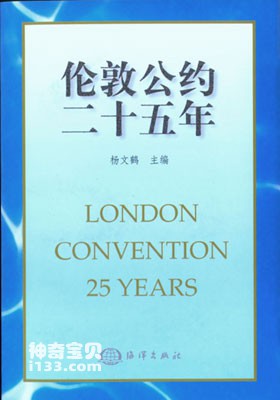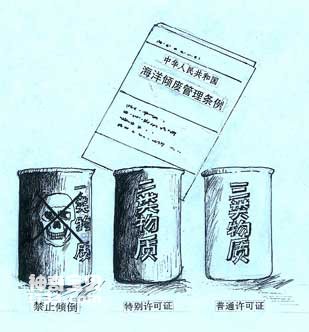In the history of the United Nations, a total of three conferences on the law of the sea have been held so far. The first time was held in Geneva from February 24 to April 27, 1958; the second time was held in Geneva from March 17 to April 26, 1960; and the third time was from December 3, 1973 From the beginning, 11 meetings in total were held, until the adoption of the United Nations Convention on the Law of the Sea on April 30, 1982.

Due to historical constraints at the time of the 1st and 2nd Conference on the Law of the Sea, only half of the countries participating in the conference were developing countries from Asia, Africa and Latin America. The four Geneva Conventions on the Law of the Sea adopted at the conference, namely: Convention on the Territorial Sea and Contiguous Zone, Convention on Public Nuisance, Convention on the Conservation of Fisheries and Living Resources on the High Seas and Convention on the Continental Shelf, are not conducive to the vast number of developing countries, especially the vast coastal areas. The state safeguards sovereignty and maritime rights and interests. The 3rd Conference on the Law of the Sea is a plenipotentiary diplomatic conference attended by all sovereign states, as well as members of United Nations specialized agencies. A total of 168 countries or organizations participated in the conference. It is also the longest and largest international legislative conference held by the United Nations so far. The adoption of the United Nations Convention on the Law of the Sea at the conference is the crystallization of the united struggle of the vast number of developing countries.
The "Convention" is divided into 17 parts, and together with 9 annexes, there are 446 articles. The main contents include: territorial sea, contiguous zone, exclusive economic zone, continental shelf, straits used for international navigation, archipelagic states, island systems, enclosed or semi-enclosed seas, landlocked countries’ rights and interests in entering and exiting the ocean and freedom of transit, international seabed and marine scientific research , marine environmental protection and safety, development and transfer of marine technology, etc.
Among them, some contents are further modifications and improvements to the old legal system. For example, the determination of the width of the territorial sea, the definition of the edge of the continental shelf, etc.; some are newly established systems, such as archipelago waters, exclusive economic zones, international seabed, etc. The "Convention" is the product of a compromise between various international forces. It inevitably has some shortcomings and even serious flaws. However, overall, it is still the most comprehensive and comprehensive international convention to manage the oceans to date. Since the 26th United Nations General Assembly decided to restore the legitimate status of the People's Republic of China in the United Nations in 1971, it has worked tirelessly with developing countries to fight against hegemonism and made due contributions to the emergence of the United Nations Convention on the Law of the Sea. contribution. The "Convention" was opened for signature in Jamaica in December 1982, and our country was one of the first countries to sign. According to the provisions of the "Convention", the Convention should enter into force one year after the deposit of 60 instruments of ratification or accession. From the first Pacific island country Fiji to ratify the "Convention" to Guyana's delivery of the instrument of ratification on November 16, 1993, 60 countries have ratified the "United Nations Convention on the Law of the Sea", which means that the "Convention" by 1994 It officially comes into effect on November 16th. my country ratified the "Convention" on May 15, 1996, becoming the 93rd country in the world to ratify the "Convention".
Dumping waste into the ocean is something humans have taken for granted throughout history. However, with the rise of modern industry, the ingredients in dumped materials have also undergone fundamental changes. Some substances that were not originally found in nature have emerged through scientific means, and many synthetic substances have appeared, some of which are highly toxic. substance. It is estimated that the amount of wastewater containing arsenic compounds dumped into the Baltic Sea exceeds 100 million tons. The full release of the toxicity of these arsenic compounds is enough to kill three times the earth's population. This is a dangerous warning. In the 20th century, the rise of the nuclear industry enabled the decay of artificial heavy nuclei and the fusion of light nuclei, resulting in the emergence of radioactive waste. The United States dumped nearly 50,000 barrels of radioactive waste in the sea near San Francisco from 1945 to 1965. Since then, it has selected 40 radioactive waste dumping areas in the Pacific Ocean. Some of these dumped radioactive wastes have caused radioactive contamination in this sea area due to broken barrels and tanks. The radioactive content in fish has been detected, which is enough to pose a threat to human health. Its potential danger and irreparable nature are becoming known to the world. Attention has been paid to the dumping of waste in the ocean, which has attracted the attention of the international community.
In the early 1970s, a large amount of toxic substances were dumped into the sea, and some coastal countries expressed dissatisfaction with the pollution hazards caused by ocean dumping. This stimulated the international community's strong demand for ocean dumping control and began efforts to comprehensively control ocean dumping. In particular, two incidents caused by ocean dumping prompted countries to realize the necessity of international cooperation in ocean dumping control. First, in 1971, a British shipping company planned to dump a batch of chemical drugs in the southern waters of the United Kingdom; at the same time, a Dutch ship was carrying 650 tons of chlorocarbon waste from the Port of Rotterdam, preparing to dump it in the northern waters of the North Sea. These two accidental dumpings The occurrence of the incident immediately aroused strong protests from the people of the countries along the North Sea as well as Norway, Iceland and other countries, which aroused firm opposition from people from all walks of life. In the end, the two dumpings failed to materialize. Taking this opportunity, the Preparatory Committee for the United Nations Conference on the Human Environment established an intergovernmental working group on marine pollution in February 1971 to study issues related to establishing a convention on ocean dumping. After many negotiations, it was finally held in London in December 1972. The London Convention was adopted at the Third Intergovernmental Conference on Sea Dumping. This is the first global convention specifically aimed at controlling ocean dumping. As a result, various coastal countries have formulated a series of relevant laws and systems based on this, so that ocean dumping is officially included in the scope of legal management.
"Regulations of the People's Republic of China on the Management of Marine Dumping"

Three regulated waste substances
The purpose of the London Convention is to control and manage ocean dumping, which essentially prohibits the dumping of toxic and hazardous waste into the ocean. To this end, the London Convention divides waste into three categories: one is waste that is included in the "blacklist"; It mainly includes waste containing mercury, cadmium and organochlorine compounds, highly radioactive waste, crude oil and petroleum products, plastic waste, etc. This category is strictly prohibited from dumping into the ocean; the second category is included in the "grey list" Wastes mainly include wastes containing arsenic, lead, copper, zinc, cyanide, fluoride, beryllium, chromium, nickel and other wastes, wastes containing weak radioactive substances, various scrap metals and metal containers, and certain disinfectants Pesticides, etc., this type of waste must take particularly effective preventive measures and obtain special permission before dumping; the third category is the "white list" substances, which are other non-toxic, harmless or toxic harmful substances other than the above-mentioned categories one and two. Very light waste should be dumped in designated areas.
my country joined the London Convention in 1985 and became a party to it, began to participate in relevant activities of the convention, and actively performed the rights and obligations of the contracting states. The Chinese government promulgated the "Marine Dumping Management Regulations" in 1985, which specifically stipulates management mechanisms and procedures consistent with the Convention. In some aspects, it is more extensive and mandatory than the provisions of the Convention. According to the "Ocean Dumping Management Regulations", the State Oceanic Administration organized relevant experts to conduct demonstrations and set up some marine waste gas dumping areas and temporary dumping areas along the coast of my country, and implemented management of activities in Qingdao, my country.
animal tags:
We created this article in conjunction with AI technology, then made sure it was fact-checked and edited by a Animals Top editor.